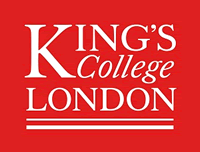Dr R Yan
No more applications being accepted
About the Project
First Supervisor: Dr Ran Yan
Second Supervisor: Dr John Maher
Cell-based therapies have shown great promise in cancer treatment. One fundamental challenge in the successful development and clinical application of cellular therapeutics is the need to better understand the in vivo behaviour of adoptively infused cell products. This interdisciplinary project aims to develop a generic indirect labelling approach to track the persistence and proliferation of the c-myc tag-containing CAR T-cells with dual PET and fluorescence imaging. A dual reporter bioconjugation reagent, 124I-Green, labelled anti-c-myc 9E10 antibody, its scFv or F(ab)2 fragments will be systematically evaluated for this purpose. This dual PET and fluorescence imaging approach would enable detecting the in vivo behaviour of the c-myc tag-containing CAR T-cells across cellular to macroscopic scales. PET would provide real-time images of the living CAR T-cells and quantitatively measure their migration and proliferation in the whole-body. Meanwhile, the high-resolution ex vivo fluorescence imaging will unveil precisely the distribution of these CAR T-cells in the target and non-target tissues.
Background and hypothesis
The chimeric antigen receptor (CAR) technology is increasingly being harnessed to generate a novel T-cell based adoptive immunotherapeutic approaches for cancer and other disease types. One fundamental challenge in the successful development and clinical application of cell based therapeutics is the need to better understand the in vivo behaviour of adoptively infused cell products.
Recently, Maher engineered a second-generation CAR named A20-28z that re-targets T-cells against v6 integrin expressing tumours of diverse origin. Myc epitope tags were engineered into the hinge/spacer of this CAR which can be recognised by the 9E10 antibody (Fig. 1A). Given its small size and linear nature, the myc epitope tag can easily be engineered into any CAR design. Moreover, commercially available anti-c-myc 9E10 antibody, its single-chain variable fragment (scFv), and F(ab)2 fragments have nanomolar binding affinity for the myc epitope. Consequently, the in vivo persistence and proliferation of the myc epitope tagged CAR T-cells could be detected by the anti-c-myc 9E10 antibody, its scFv, or F(ab)2 fragments labelled with a contrast reagent. Ran has developed an iodine-124/fluorescein-based dual-modality labelling reagent, 124I-Green. It constitutes a generic tool for one-step installation of a PET and a fluorescent reporter to any antibody or antibody fragment. When coupled with a cancer targeting antibody, the 124I-Green dual-labelled A5B7 was successfully applied to undertake cancer PET imaging and fluorescence-guided surgery (Fig. 1B).
We envisage that a generic indirect labelling approach to track the persistence and proliferation of myc tagged CAR T-cells with dual PET and fluorescence imaging would be developed using the 124I-Green labelled anti-c-myc 9E10 antibody, its scFv, or F(ab)2 fragments. PET will provide real-time images of the living CAR T-cells and quantitatively measure their migration and proliferation in the whole-body. Meanwhile, the high-resolution ex vivo fluorescence imaging will unveil precisely the distribution of these CAR T-cells in the target and non-target tissues.

 Continue with Facebook
Continue with Facebook

